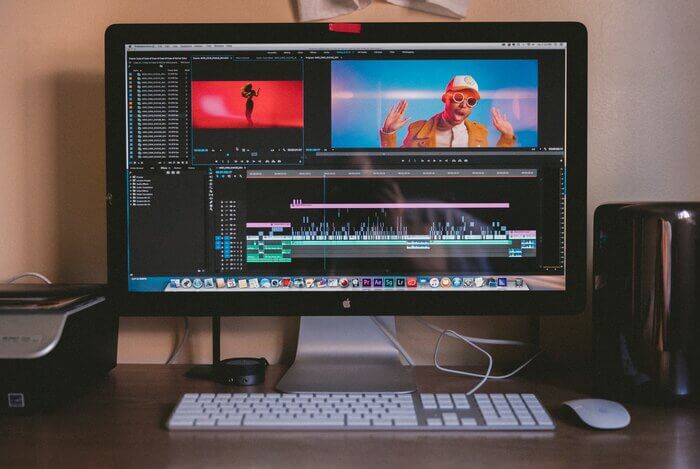Do you know that 90% of users prefer instructional videos when they want to learn something?

Just imagine how many people watch YouTube every day looking for How-to videos to say nothing about those who choose video courses. Not only individuals tend to learn by watching video content, but even companies also instruct their employees this way.
More than 50% of people watch video tutorials at least twice a week.
Isn’t that impressive? Surely, it is! So, let’s go on learning HOW to create video content for your tech docs!
Instructional Videos – What Is That?
An instructional video is a video that explains, demonstrates, and shows how to do something. Here are some examples of instructional videos.
Instructional videos can be of the following types:
- Micro-videos. They are up to 60 seconds long. The main idea is to show a narrow topic or a single step or action with no excessive explanations.
- Tutorials. This type of video is an instruction that teaches how to do something or what steps to follow. Nearly anything can be learned like that. As a rule, it is no longer than ten minutes.
- Presentations and lectures. They can be much longer (about an hour or more) than the above-mentioned types. You can record the whole lesson and make it available later.
Preparation Steps: Define the Goal and Write the Script
You will be surprised to learn that preparation steps may take even more time than shooting a video itself, as a good plan is 50% of success. It is not only about preparing the tools. It is about what and how you are going to tell your viewers. So, at first, you are to:
- Learn your audience. That is what everyone is talking about when creating tech docs. And it is the same with instructional videos. Learn your users and their pains. Offer them a way to solve their problems and tell them about it so that they can easily understand you.
- Define your goal. Setting a clear learning goal for your video will show you what to do next and how. It is like choosing a direction to move.
- Choose a format. You can shoot a video with a camera (live-action video), or you can create a screencast. These are videos that demonstrate what you do on your screen. They are great when you show how to use a software product. Actually, screencasts are the best choice for technical documentation, as it doesn’t take so much time and effort to make them. They are highly informative and are used in the majority of technical docs. Of course, this is the right choice for a beginner. Later on, when you gain experience, you can choose more complicated types of video content. This post will tell you more about screencasting – Latest Tips on Using Video Content in Technical Documentation. Another format that you can use is animation. But that is a totally different story that requires another set of skills. Though animation is quite attractive, and viewers like it.
- Create a storyboard. This step is optional. If you want to make a screencast or a micro-video, you don’t need it. Creating a storyboard is more about shooting a ‘movie’ – in case you need something pretentious than just a short video. A storyboard will help you outline what you are going to show. You can sketch what the scenes should be like, what angles you need, what you want to show (people or things), how you want to do it (close or far), etc. You don’t have to be a painter. It is just a plan for you and your vision of what a video should be like.
- Create a script. A script will help you efficiently tell your viewers what you want to tell. Besides, you’ll clearly see what should be said and what is excessive. And, you surely won’t lose sight of anything. Don’t forget that your script should tell a story. It is not just a mess of facts and figures. It is a logical structure with action sequences.
- Prepare assets. Think carefully about what you need for your video: visuals, logos, music, sounds, etc. Prepare all that beforehand. It will save your time and effort.
- Choose the right name. Your video’s title should be clear and informative. If you tell about using a software product, don’t name your video How to Make Pancakes. It is vital to use the right keywords to let users quickly find it.

Choosing Screen and Video Capture Software and Recording a Video
When you shoot a video with a camera, most probably, you’ll need to use video editing software. The most popular ones are Adobe Premiere Pro, CyberLink PowerDirector 365, Lightworks, Hitfilm Express, Shotcut, etc. Some of them are free, some are paid, but in a wide variety of tools, you’ll surely find the best tool for you. Though I would say that working with this type of content is not for beginners. It is a more advanced level.
If you only start developing your skills in producing video-content, choose screencasts. Take a look at the list of screen and video capture software: Wondershare DemoCreator, CamStudio, QuickTime, Monosnap, Jing, etc. Some of them not only allow you to capture the screen but also to record through a webcam, record audio, and edit video. Pay attention to these features when choosing a tool.
And, here are some tips on how to improve your video:
- Practice a couple of times before recording.
- Close all unnecessary tabs and windows. They are distractors.
- Choose standard dimensions to make sure it displays on video hosting platforms.
- Zoom in if you are showing small text or other elements.
- Limit movements.
Choosing a Video Hosting Platform
Choosing the right platform for video hosting is as important as creating valuable content. Videos are always heavier than texts. This may cause server lag or a website going down. And what you are looking for is the ability to share your content without problems. Obviously, it is a great idea to use a video hosting platform instead of using your own resources to host videos. Hosting platforms can be of the following types:
- Free – YouTube, Dailymotion, Vimeo, etc.
- Paid – Wistia, vooPlayer, Brightcove, etc.
Of course, these are the most popular ones. As a rule, paid video hosting platforms are used for specific business needs. But it doesn’t mean that you are to use them. When you only start producing video content, choose a free hosting platform that is familiar to you. Everyone knows YouTube and how to use it. So, do not hesitate to use it as well.
Most technical writing tools allow you to insert video links in technical docs. Moreover, some help authoring tools, like ClickHelp, allow embedding videos into online documentation. The mechanism is like that: your video hosting platform generates a piece of HTML – the embed code – that you can insert into your blog or website. And that’s it – a simple solution to a complex problem. If you need more information on how to insert videos while creating content in a software documentation tool, check out this instruction – Insert Videos.
Analyzing Results and Gathering Feedback
Gathering feedback is useful at all stages. Perhaps you don’t see some imperfections in your script or storyboard. You’ll have enough time to make corrections if you ask someone to take a look at what you are doing before recording. What seems easy and obvious for you may be different for other people. And, sometimes, we do not see how to improve what has already been done. We need an outside perspective.
As for analyzing the results, it is all about tracking statistics. All video hosting platforms allow users to do that. If you want to create video content that viewers like, you are to track your statistics regularly to find out who watches your videos, whether they enjoy watching or not, what videos are most popular, etc. So, the most common figures are views, watch time, audience retention, percent liked/disliked, traffic sources, gender, age, top countries, etc.

A Few Words About Voice Recording
Videos that do not feature people often need a voiceover, for example, screencasts, product demos, etc. How to do that?
- Make sure your speech sounds clear, and you can choose a suitable pace.
- Record audio first, then match your video, as video content is more flexible.
- Use special software to record voice and edit your files. The greatest thing is that some tools allow you to edit your voice recordings just like a text. You can delete all moments when you stumble or hesitate.
- Choose a decent microphone. That is vital. Voice recording of poor quality may ruin your video.
- Check how your recording sounds on all devices. It may happen that it is flawless on a computer, but it is of poor quality through your headphones.
But what should one do if it is too complicated to record voice? There is a way out – add captions or subtitles to your video. One would say that it is complicated. Believe me, it is not. There are a lot of free tools to help you do that: Subtitle Horse, Amara, DotSub, and many others.
Now you are ready to start shooting! Another piece of advice here: do not worry if your equipment is not professional and super-expensive. Yes, some types of video content require using specific devices. But today, there are many other gadgets and tools that allow creating decent videos. Sometimes, even a smartphone camera can do a great job! You do not necessarily need expensive and professional software. There are a lot of free tools and services with a wide variety of features to help you create high-quality video content.
Conclusion
Video has replaced or supplemented written content for a number of companies. It efficiently displays the options of how to use a product and enables two-way communication. With all the above-mentioned tips, you are ready to create your instructional videos for technical documentation. Video content can make your online docs incredible: you can not only transmit information but also add some emotions to it. And, of course, show users how strongly you love your occupation.
Along with that, we get a perspective of what new skills become a must-have for technical writers in 2021. I wonder what we are going to have next!
Good luck with your technical writing!
ClickHelp Team
Author, host and deliver documentation across platforms and devices




